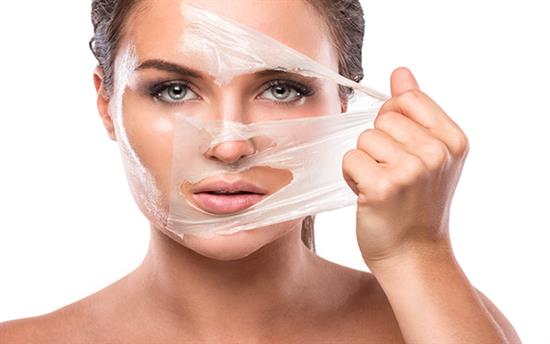
First things first, out of all facial rejuvenation treatments a surgical facelift produces the best immediate and long-term results. The reason for this is that the tissues which have aged are restored to their anatomically youthful position using modern surgical techniques of elevating the deeper tissues. The longevity is unmatched by any other solution to ageing and it can address a myriad of specific facial complaints, including sagging skin, jowls and loose muscles in the neck. However, ageing also affects the surface of the skin with thinning and changes in the texture causing fine lines, wrinkles and uneven pigmentation.
A chemical peel is ideal for freshening the complexion of the skin and can greatly enhance the results of a facelift. Mr Chana is one of the few Plastic Surgeons in the country offering chemical peels as well as facelift surgery. He strongly believes that a combination approach treating both deeper tissues as well as the surface of the skin provides the best results in the pursuit of rejuvenation. The chemical peels offered by Mr Chana are medical grade peels much stronger than those available on the high street salons and provide definite and visible improvements after the healing period.
What causes ageing of the skin?
Visible signs of ageing are caused by a reduction in the natural collagen levels in the body. As early in life as our mid-twenties, our bodies stop producing collagen at the same rate, and thus the ageing process begins to kick in. As we age further, collagen production decelerates more and more, meaning the signs of ageing get more apparent. Combined with this other environmental factor related to modern day living to accelerate the ageing process. Sunlight is one of the most important factors since ultraviolet light causes thinning of the skin by depleting the formation of new collagen and also causes pigmentation problems resulting from sub blemishes, freckles and moles. The best preventative measure for maintaining skin complexion is therefore complete sun avoidance. Smoking is the next factor which causes collagen depletion and smoking cessation is imperative in maintaining skin condition and preventing the future formation of lines and wrinkles especially around the mouth.
How long after a facelift can you have a chemical peel?
The best time to consider a chemical peel is a minimum of 6 weeks following facial surgery. This provides time for the healing process to have occurred and the skin is stable to heal from the chemical peel. However, many patients find that having to undergo a further treatment so soon after facial surgery is inconvenient and therefore elect to delay this treatment until a later time.
How is a chemical peel performed?
Mr Chana uses TCA (trichloro-acetic acid) peels for skin rejuvenation. These peels come in various strengths which will have a bearing on the degree of effect and the recovery period. In general, the concentration will vary from 15% to 35%. Usually, the peel can be carried out after the application of a local anaesthetic cream but deep peels may require sedation. The process of the application of the peel involves pasting the acid on the skin until frosting is achieved. The peel is then washed off and an antibiotic-impregnated topical cream is used to provide protection and moisturisation of the skin. You do not need to stay in hospital since these are procedures carried out in the clinic or as day case stays.
Can a chemical peel be carried out at the same time as a facelift?
Since the skin has been elevated and separated from the deeper tissue a deep chemical peel may cause complications with the healing of the skin if carried out at the same time as facelift surgery. There may be areas which are not touched by the facelift where a limited peel can be performed. These include the upper and lower lips and the forehead. However, the upper and lower lips generally suffer from quite deeply ingrained vertical lines for which a chemical peel may not be completely effective and carbon dioxide laser treatment is better suited in this situation since this penetrates deeper under the skin.
What is the recovery following a facial peel?
The first couple of days a tight mask like feeling is common before the skin gently starts to flake away. It is important not to pick the skin since there is a risk of scarring or hyperpigmentation. The skin will peel away over the first two weeks. In deeper peels, there may even be some crusting of the skin. During this time, it is imperative to keep the skin moist with the prescription cream provided and to stay out of strong sunlight. After this 2-week period, the healing has occurred and you may apply makeup along with sunblock which is important. In a minority of cases of very deep peels there may be some mild redness which takes one to two weeks longer to subside but at this stage, makeup can be used to disguise this easily.
How long do the effects of a chemical peel last?
The effects of a peel are quite long-lived and generally last a few years. However, this depends on the depth of the peel and how severe the state of the skin was, to begin with. The skin is a continually growing and regenerating organ and will continue to slowly age. It has to be remembered that strong sunlight exposure after chemical peels can quickly reverse the benefits. Many individuals decide to have a milder top up peel on an annual basis to keep the skin in good condition.
